Sometimes you know when you step into a place that it is holy. You feel the weight of the years, the atmosphere charged with silence and veneration; the air seems colder and thinner than in the street outside and there’s a sense of something invisible being there. There are numerous sacred places and temples in London which give me that feeling. The temples weren’t planned as a tourist attraction, but they are definitely interesting places to visit in London – and all the people you meet in them are friendly, willing to explain their beliefs and values, even if you don’t happen to share their views. It is definitely a great idea for a rather “different” day out exploring London’s secret spiritual side.
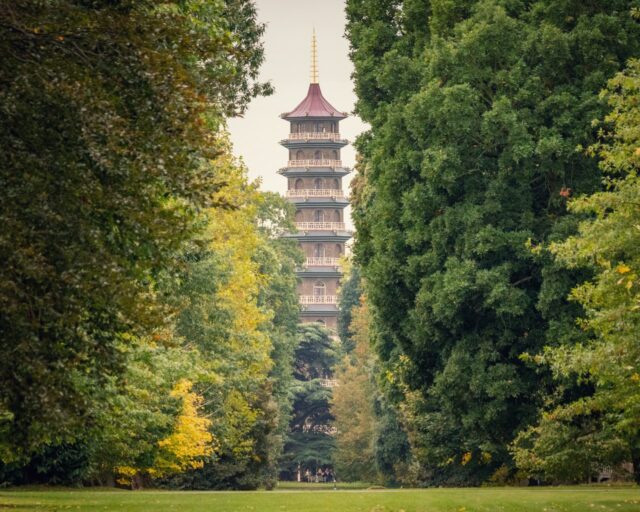

Sacred places in London to visit
Masonic Temple
The first time I went into the Masonic Temple in Great Queen Street, I felt a shiver of recognition. This was a sacred place – one that crackled with holy electricity.
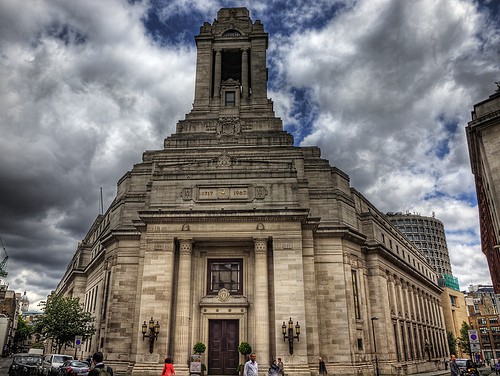
It did help that I was attending a performance of Mozart’s Magic Flute – highly appropriate since his opera uses many of the symbols of Masonry and is indeed set in a temple. But the building – on the outside a piece of standard Lutyens-ish classicism – is fascinating; full of symbolism, from the Masonic Eye of God who sees all to the Egyptian pyramid and luxuriously appointed (the Grand Master at the time it was built was a son of Queen Victoria), full of massy bronze, gleaming tiles and fine wood veneers.
The Masons, long renowned for their secretive nature, now offer guided tours of the temple during the week.
Sri Swaminaryan Mandir
A younger temple is the Sri Swaminaryan Mandir, out in suburban Neasden. It looks ancient, with its towering white spires and ornate carving, but in fact it was only begun in 1992.
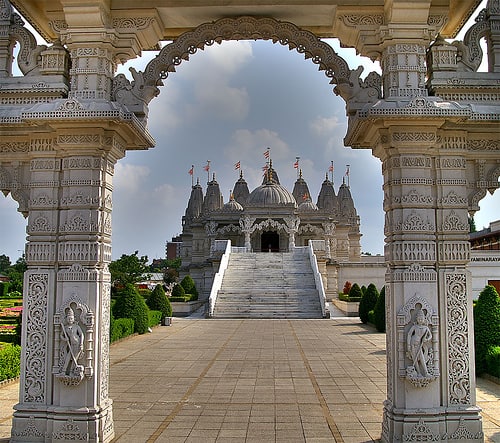
Inside, saffron clad priests keep the gaudily dressed deities fed; at times the shrines look like an upmarket patisserie, with bright purple wedding cakes and plates of delicacies laid out in front of the gods – the bright colours contrasting with the white marble. Bright pink light infuses one shrine; another is tinted blue. It’s sensory overload; if you come at the right time, the temple is full of the smell of cooking and ripe fruit; worshippers ring the bell at darshan (viewing of the images) as chants resound in the echoing building.
Yet also, in a way I can’t explain, it feels very English – in its openness to members of other faiths and its neatness, even the cardigans worn over saris on a nippy autumn day.
ISKCON temple
See a different spin on Hinduism at the ISKCON temple in Soho Street. Unlike the towering Mandir, this is a temple that would be easy to walk right past – it’s a room upstairs in an ordinary West End house, which contains not just the temple but also an ashram where Krishna devotees live and work.
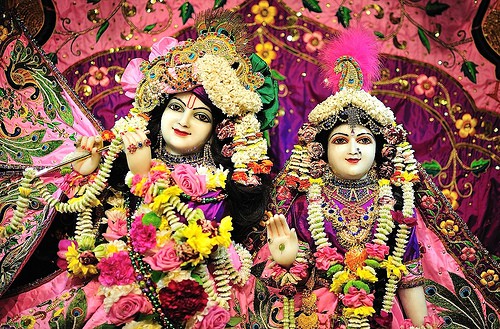
The temple opens at half past four in the morning, when the first darshan of the day is held; though most will probably prefer to attend a little later at seven, when songs are sung to glorify Krishna and the Hare-Krishna is chanted. Lunchtime is also a popular time to visit, with worship followed by a talk on the values of the ISKCON movement– recommended for anyone interested in Indian spirituality and followed by lunch. My favourite time of day in any Krishna temple though is the evening session, held here at 9 pm; somehow singing a bhajan or two seems a natural way to prepare for rest.
Govinda’s, the temple restaurant, is one of the cheapest places to eat in London; but it’s also a way into the heart of Krishna, as all the food is vegetarian, and has been offered as prasad (a gift to the gods) before being served.
Wat Buddhapadipa
Wimbledon has a Buddhist temple, Wat Buddhapadipa, built in the Thai style (its construction was supported by the Thai government) in the middle of gardens and orchards (the gardens are open during the week, the main temple only at weekends).
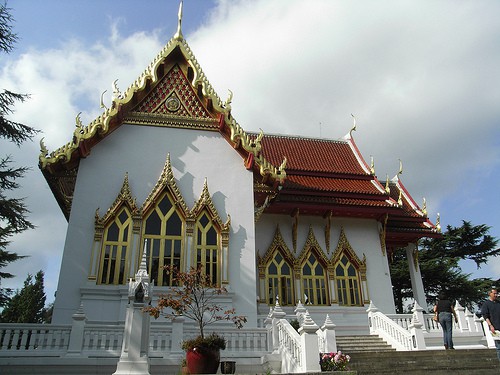
The temple is a delicate building with upswept wooden roofs and tiny pinnacles; inside, the colours are bright, golden statues gleaming, scenes from the Buddha’s life painted on the walls, the ceiling painted ox-blood red. Unlike the shining Neasden temple, this one feels mysterious, the dark hardly lit by the lamps around the shrines.
The nicest surprise, for me, was outside. Where other gardens have gnomes, these ones have little buddhas and bodhisattvas sitting in the rockeries.
Temple Church
Finally, there’s also a “temple” of sorts for Christians – namely the aptly-named Temple Church, a gorgeous medieval church built by the Knights Templar which was recently made famous by its role in the Da Vinci Code.
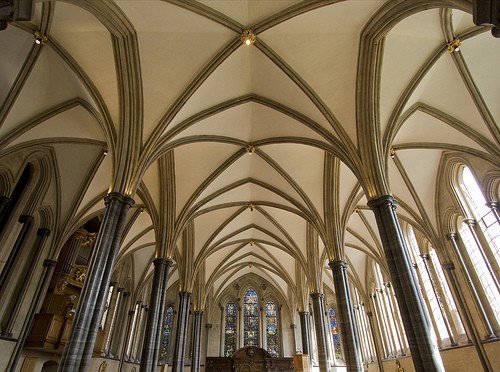
It’s a spectacular construction, with glossy black Purbeck marble supporting the top storey and the whole central area lit up by high windows under the wooden vault. It’s a true sanctuary and one of my favourite churches in London.
Read more about alternative ways to explore London and what to do in London when it rains.
A guest post by Andrea Kirkby.

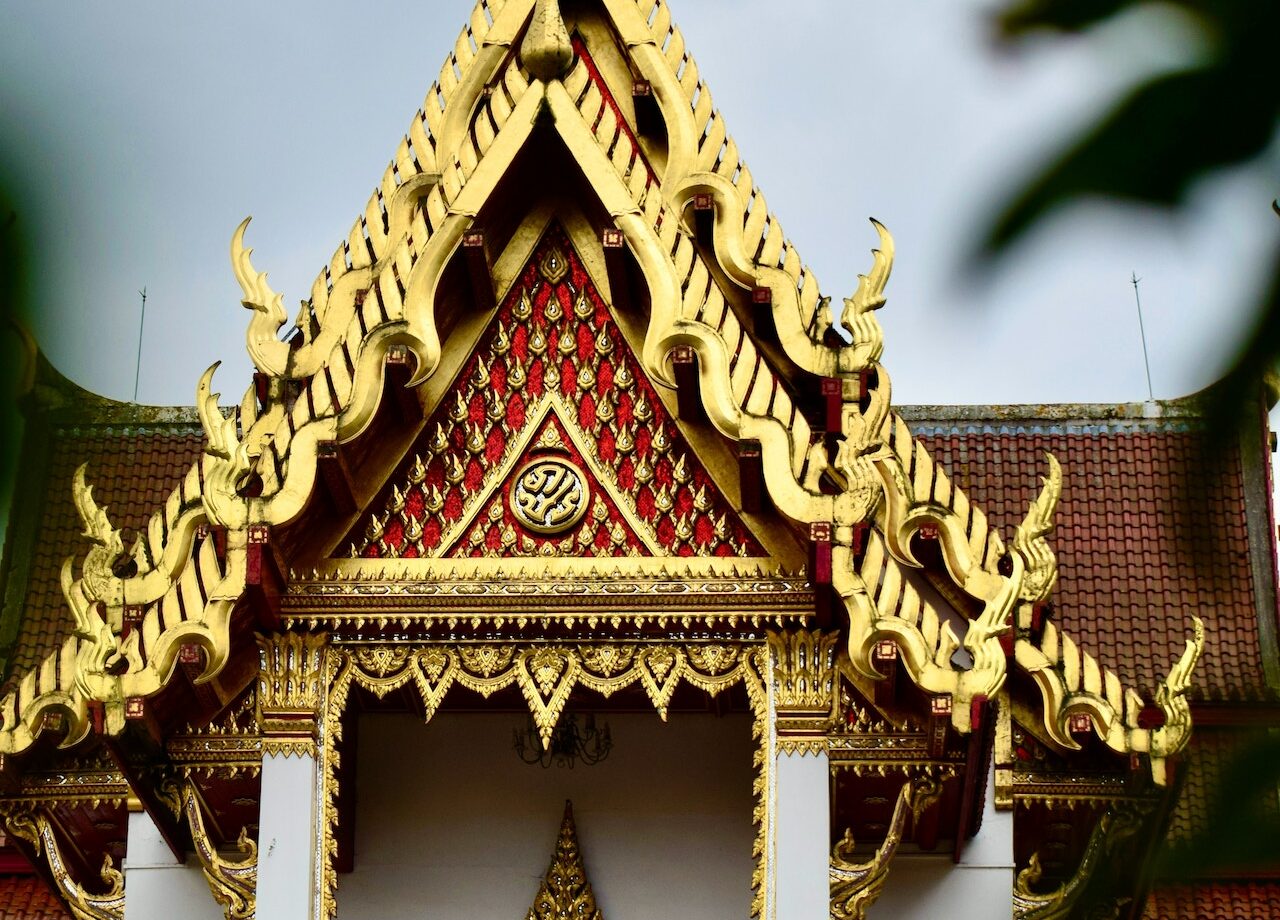
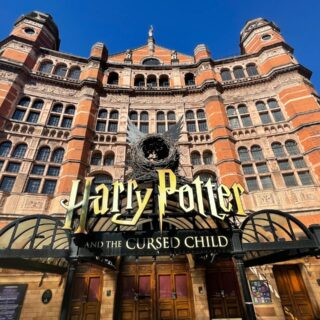
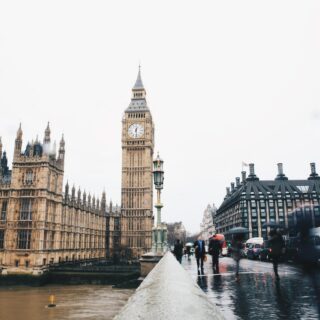
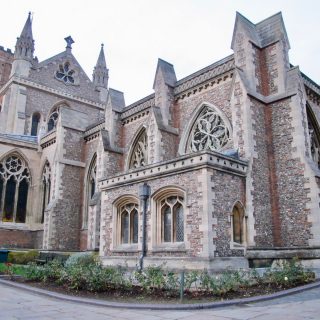
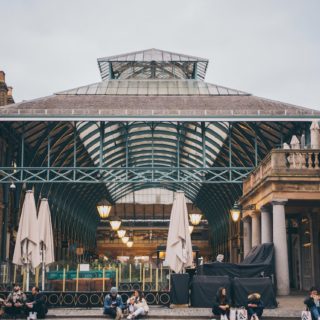






Exploring different cultures and visiting different Temples, Mosques and Churches is what traveling is all about! Great post, great pictures and great insight.
Hey, nice article & thanks for crediting the photo!
Wow, that Masonic temple is amazing!
Wow, in the ten years I lived in London I never went to the Neasden temple… I see now that should have!
Thanks Chris for your comment. 🙂
Hi, there are places in England (like the ones you mentioned) that are really…. “exotic” and by visiting them seems like to visit a different continent!!